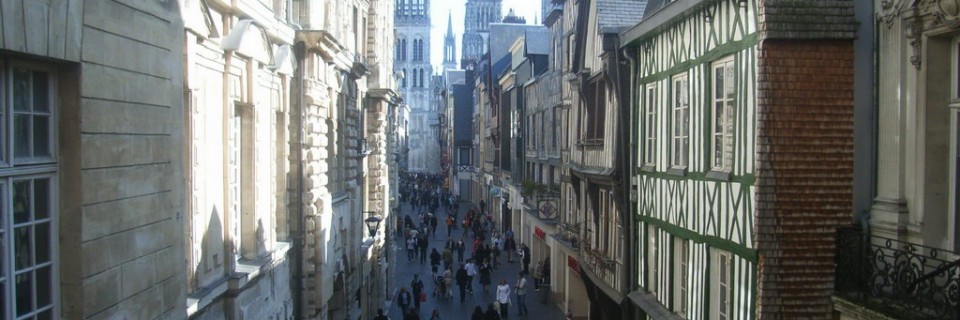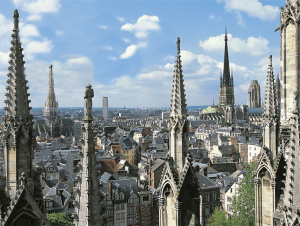Rouen city was the first capital of Normandy designated as such after the peace treaty which was signed in 911 by Charles the Simple, King of France and Rollo, the Leader of the Vikings who were, at that point, threatening Paris.
Rouen city was the second largest city in the medieval Kingdom of France. It benefited a lot from its position on the Seine River half way between Paris and the Seine estuary, with its port being deep enough for sea-going ships to dock there.
Its woolen industry developed and gradually the town gained more and more wealth and thus more and more independence.
Owing to the number of churches built there the city of Rouen is also known as the city of 100 steeples.
During the Hundred Years War, Rouen city was occupied by the invading English Army for 30 years. It was during this period that Joan of Arc was tried and executed in here. A monument now stands on the site where she was burned to death at the stake for being a witch.
In the 1970’s a church dedicated to Saint Joan of Arc was built nearby. Its modern architecture surrounds stained glass windows dating from the XVth century. These windows were originally made for the church of Saint Vincent in Rouen, but they were removed at the beginning of WWII and hidden in a cave in the Loire Valley. Following the bombing of Rouen during the Second World War the church of Saint Vincent was one of the buildings destroyed, hence the windows today being in an otherwise very modern church. Despite the entire left bank of the Seine River being bombed flat during the Second World War, Rouen today is still filled with magnificent churches including Rouen Cathedral, a building which was painted many times by Claude Monet. A walk along Rouens ancient streets will also allow you to discover the former parliament building of Normandy, the “old clock” with only one hand that once indicated the phase of the moon still showing the day of the week…




